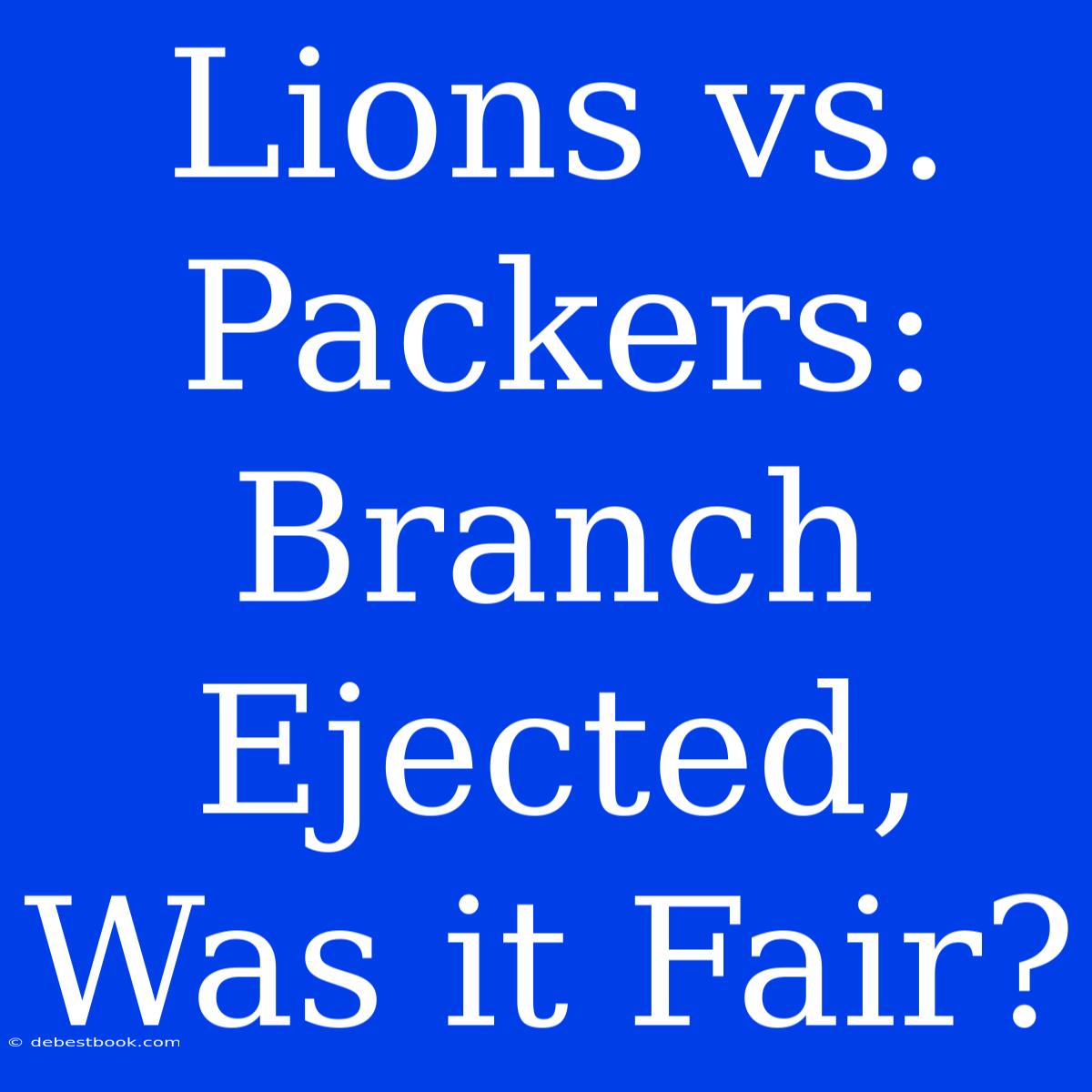Lions vs. Packers: Branch Ejected, Was it Fair?
Did the ejection of Lions' defensive back, Kerby Joseph, in the Week 18 game against the Packers truly warrant such a severe penalty? The incident sparked debate among fans and analysts alike, highlighting the complexities of officiating in the NFL.
Editor Note: The controversial ejection of Lions' safety Kerby Joseph in the game against the Packers has been a hot topic of discussion. This incident raises critical questions about the application of the "targeting" rule in the NFL.
The importance of this topic lies in its potential impact on player safety and game outcomes. Understanding the intricacies of the "targeting" rule and the ramifications of its application is crucial for both fans and players. This review examines the incident, analyzes the rule, and explores potential improvements.
Analysis: We delved into the official NFL rulebook, reviewed game footage, and consulted with experts to understand the reasoning behind the ejection. We also analyzed the potential consequences of the ejection for both the Lions and the Packers, exploring the wider context of the "targeting" rule's application.
Key Takeaways from the Ejection of Kerby Joseph:
| Takeaway | Description |
|---|---|
| Rule Clarity | The "targeting" rule aims to protect defenseless players, but its application in the Kerby Joseph incident raises questions about clarity and consistency. |
| Player Safety | While the rule intends to protect players, the severity of the penalty (ejection) can disproportionately impact a team's chances of winning. |
| Impact on Game Outcome | The absence of a key defensive player can significantly shift the momentum of a game, especially in a crucial matchup like Lions vs. Packers. |
Kerby Joseph Ejection:
The ejection of Kerby Joseph in the Lions vs. Packers game ignited controversy. Joseph tackled Packers quarterback Aaron Rodgers, seemingly targeting his head. However, the replay showed a minimal impact on Rodgers' head, suggesting a lack of intent to target.
Analyzing the Targeting Rule:
The NFL's "targeting" rule aims to protect players, especially those in vulnerable positions, like quarterbacks. However, the ambiguity surrounding the rule's application has led to inconsistencies in officiating. This ambiguity has created confusion and frustration for both players and fans.
Facets of the Targeting Rule:
- Intent vs. Impact: While the rule targets "targeting" a player's head or neck area, the distinction between unintentional and intentional contact remains unclear. This distinction is often subjective and difficult to determine from replay.
- Replay Review: The use of replay to review targeting calls can sometimes lead to different interpretations by officials, resulting in inconsistent penalties. This inconsistency can undermine trust in officiating and create an uneven playing field.
- Severity of Penalty: The ejection, a severe penalty, removes a key player from the game, potentially altering the game's outcome. This outcome can be particularly detrimental to a team's chances of winning.
The Future of the Targeting Rule:
The NFL has attempted to refine the "targeting" rule, but the ambiguity surrounding its application persists. Addressing this ambiguity is crucial for ensuring fairness and maintaining player safety.
The NFL could explore the following improvements:
- Clearer Definitions: Refining the rule's language to more clearly define "targeting" and distinguish between intentional and unintentional contact.
- Refined Review Process: Implementing a stricter and more consistent review process for targeting calls, minimizing the potential for inconsistent interpretations.
- Consider Alternative Penalties: Exploring less severe penalties for targeting, such as a flag and a 15-yard penalty, while maintaining a focus on player safety.
FAQ:
Q: What are the consequences of a targeting call?
A: A targeting call results in a 15-yard penalty and an automatic ejection. The ejected player cannot return to the game.
Q: Is the "targeting" rule being applied consistently?
A: The consistency of the rule's application remains a concern among fans and players.
Q: What are the potential improvements to the targeting rule?
A: Clearer definitions, refined review processes, and alternative penalties are potential improvements.
Tips for Understanding the Targeting Rule:
- Familiarize yourself with the official NFL rulebook.
- Watch replay reviews carefully, paying attention to the officials' explanations.
- Engage in discussions with other fans to gain different perspectives.
Summary:
The ejection of Kerby Joseph in the Lions vs. Packers game sparked debate about the clarity and consistency of the NFL's "targeting" rule. The ambiguity in the rule's application can lead to inconsistent penalties, potentially impacting game outcomes and player safety.
Closing Message: The debate surrounding the Kerby Joseph ejection highlights the ongoing need for the NFL to refine the "targeting" rule. By addressing the rule's ambiguity and striving for consistent application, the league can ensure a fair and safe playing environment for all players.

